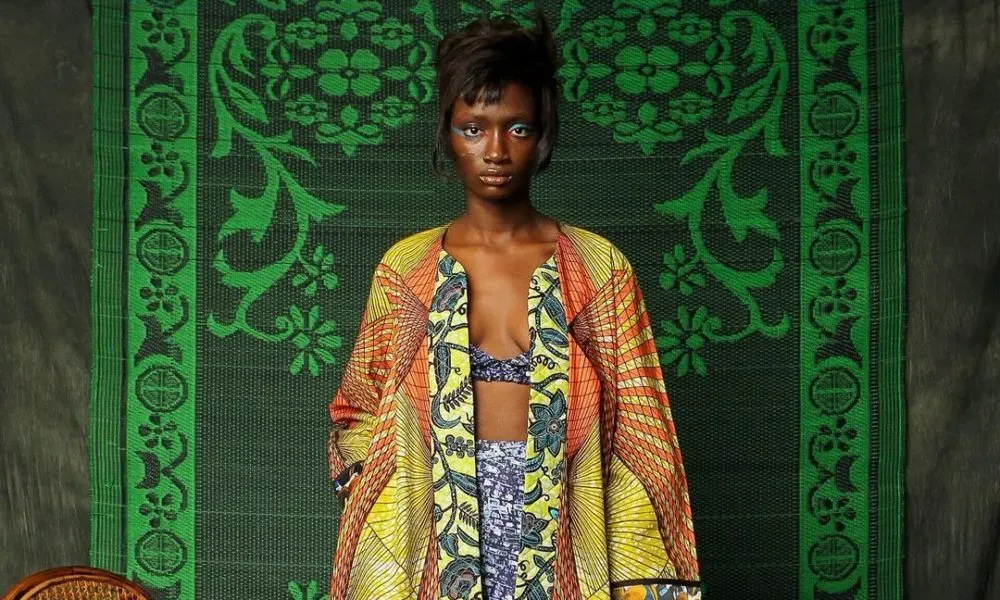Sustainable fashion Africa is revolutionizing the continent’s approach to clothing and textile production. With growing awareness of environmental issues, designers are leading the charge by adopting eco-friendly fashion practices. Notably, events like Nairobi Fashion Week showcase innovative talent such as upcycled clothing crafted from recycled materials, highlighting the creativity of African fashion designers. By blending modern aesthetics with cultural heritage, these creatives emphasize sustainability while addressing the alarming rise in textile waste. Ultimately, sustainable fashion Africa represents a movement towards ethical sourcing, fair labor practices, and the preservation of local craftsmanship.
The concept of environmentally responsible style in Africa is gaining momentum, as an increasing number of designers seek to blend sustainability with traditional practices. This emerging trend echoes the movement towards green fashion, where catalogues of upcycled garments and eco-conscious collections dominate events like Nairobi Fashion Week. By focusing on the use of repurposed materials and collaborating with local artisans, these forward-thinking creators are transforming what it means to dress stylishly in an environmentally-considerate manner. The commitment to recycled materials fashion signifies not merely a trend but a shift in mindset among consumers and creators alike. In this way, the African fashion scene is poised to make a significant impact on the global stage while nurturing its rich cultural heritage.
The Rise of Sustainable Fashion in Africa
Sustainable fashion in Africa is rapidly gaining momentum, as designers embrace eco-friendly practices to combat the environmental crisis stemming from textile waste. Events like Nairobi Fashion Week are not just showcasing the latest trends, but are also pivotal in promoting innovative approaches to reusing materials. Designers are increasingly utilizing discarded textiles, transforming them into high-fashion pieces that resonate with cultural heritage while addressing pressing environmental issues.
The passionate work of brands such as Maisha by Nisria highlights the shift towards sustainability, where creative minds are pushing boundaries by repurposing materials sourced from flea markets and landfills. This movement is significant not only for its aesthetic appeal but also for its proactive approach to reducing waste, making sustainable fashion in Africa a testament to creativity and resourcefulness. By prioritizing eco-friendly practices, these designers are reshaping the fashion landscape on the continent.
Innovative Materials in Eco-Conscious Design
The use of recycled materials is at the forefront of the sustainable fashion conversation in Africa. Designers are creatively employing sourced resources like secondhand textiles and upcycled curtains to craft unique collections that reflect an ideal blend of modernity and tradition. For instance, collections showcased at Nairobi Fashion Week featured garments made from wide-leg denim and reimagined curtains, which not only highlight the aesthetic potential of waste but also echo a strong environmental message.
The push for using recycled materials is further exemplified by Rwandan designer Jean Maurice Niyigena, whose Exodus collection incorporates hand-painted designs on repurposed fabrics. This trend not only contributes to waste reduction but also champions the significance of ethical sourcing and fair labor practices within the African fashion industry. As designers increasingly prioritize innovative materials, eco-friendly fashion is no longer a fleeting trend; it’s becoming a foundational principle of modern African design.
African Fashion Designers Leading the Charge
The vibrant creativity of African fashion designers significantly contributes to the sustainable fashion movement across the continent. As illustrated by the works of designers like Tausi Conde and Jean Maurice Niyigena, the merging of contemporary design with sustainable practices is producing clothing that carries both significance and elegance. These designers serve as role models, showcasing how cultural heritage can inspire innovative solutions in an ever-changing fashion landscape.
Emerging designers are also seeking collaborative efforts with local artisans, further reinforcing the importance of community involvement in sustainable practices. This collaborative spirit helps local artisans to showcase their skills while ensuring that fashion remains rooted in local traditions. As more young African designers step up to embrace ethical practices, the industry is set for a revolution that not only satisfies consumer demands for sustainable options but also respects cultural identity.
Challenges Facing the Sustainable Fashion Movement
Despite the progress in promoting sustainable fashion, there are significant hurdles that African designers must overcome. Issues such as limited access to locally produced raw materials pose serious challenges for designers like Sikoti Mbaitjongue, who struggles to source quality fabrics from within the continent. West African countries, despite being major cotton producers, often export their raw materials, leaving local designers to navigate complex supply chain issues. This predicament ultimately raises the costs of producing sustainable fashion, making it less accessible to African consumers.
Furthermore, the influx of secondhand clothing from other countries complicates the landscape for local textile production. While this may offer cheaper options to consumers, it contributes to a burgeoning textile waste problem as outlined by studies in Ghana. The competition from imported garments stifles local production and exacerbates the environmental crises faced by many African nations. For sustainable fashion to thrive, there is an urgent need for policy reforms that support local industries and encourage the responsible sourcing of materials.
The Role of Events Like Nairobi Fashion Week
Nairobi Fashion Week has become a significant platform for advocating sustainable fashion practices across Africa. By providing a space where designers can showcase their eco-friendly collections, the event catalyzes discussions around sustainability within the fashion industry. The visibility created by such events encourages both designers and consumers to engage in discussions about environmental responsibility and ethical sourcing, therefore promoting a cultural shift toward sustainability.
This event also fosters collaboration among key stakeholders, including policymakers, consumers, and designers. By convening these diverse groups, Nairobi Fashion Week seeks to draft comprehensive recommendations that can push for much-needed regulatory changes in the industry. As more designers adopt sustainable practices, the role of such platforms becomes increasingly crucial in addressing the challenges and promoting a united front for the future of fashion in Africa.
Cultural Heritage and Sustainable Practices
Incorporating cultural heritage into sustainable fashion is a distinct aspect of African designers’ works. Many creators are not only focused on ecological impacts but also on telling stories through their designs that reflect their rich cultural backgrounds. These designs often draw inspiration from traditional textile art, melding eco-friendly practices with the preservation of cultural identity. This powerful blend serves to honor the past while paving the way for innovative and sustainable futures within the fashion industry.
The emphasis on cultural heritage can be seen in Jean Maurice Niyigena’s approach as he integrates traditional motifs into modern silhouettes. This creates a dynamic interplay between historical context and contemporary fashion, allowing consumers to feel connected to their roots while making environmentally conscious choices. As designers continue to celebrate their heritage, they are inspiring a new generation of eco-conscious consumers who value both style and sustainability.
Future Prospects for Sustainable Fashion in Africa
The path ahead for sustainable fashion in Africa holds great potential, particularly as awareness grows among consumers about the impact of their choices. Young consumers are increasingly seeking out eco-conscious options in alignment with their values, driving a demand for innovation in sustainable practices. This paradigm shift indicates a ripe opportunity for designers to evolve their practices and create fashion that is not only stylish but also ethically produced.
As the industry continues to grow, there is an overarching call for improvements in local textile production and accessibility of sustainable materials. With supportive policies and infrastructure, the future could see a flourishing market for sustainable fashion that empowers local communities and preserves cultural integrity. The vision of a future where sustainable fashion is commercially viable and widely accepted is within reach, inspiring hope for a lasting change in Africa’s fashion landscape.
The Importance of Eco-Friendly Fashion Initiatives
Eco-friendly fashion initiatives are paramount in reshaping the perception of fashion in Africa. The urgency for brands to adopt sustainable practices cannot be overstated, given the looming environmental crisis associated with textile waste. These initiatives extend beyond mere fabric choices; they encompass a holistic approach that considers ethical labor practices, sustainable sourcing, and community empowerment. This comprehensive framework positions eco-friendly fashion as not just an aesthetic trend but a moral imperative.
Events like Nairobi Fashion Week highlight the best practices in sustainability, creating visibility for eco-friendly initiatives. As designers showcase their efforts to combat waste and promote responsible consumption, they are also educating consumers about making informed choices. Such initiatives foster consumer support for brands that prioritize sustainability, thereby amplifying the movement towards a more responsible fashion industry that honors both the planet and the people.
The Impact of Consumer Awareness on Sustainable Fashion
Consumer awareness plays a critical role in the sustainability of fashion. As people become more informed about the environmental impact of their purchases, there is growing interest in eco-friendly and sustainable fashion options. This shift is significant as it compels designers to align their practices with consumer values, encouraging a market that prioritizes sustainability over fast fashion. The demand for transparency in production processes is growing, urging brands to communicate their ecological and social commitments clearly.
The rise of social media has amplified the voices of eco-conscious consumers, offering platforms for young designers to showcase their sustainable collections. By sharing their unique fashion stories and environmental goals, these designers are reaching audiences who resonate with their missions. As consumers increasingly seek out brands that reflect their values, sustainable fashion becomes more than just a trend; it becomes a movement driven by informed choices and a shared commitment to ecological stewardship.
Frequently Asked Questions
What is sustainable fashion in Africa and how does it relate to eco-friendly fashion?
Sustainable fashion in Africa refers to the practice of creating clothing and accessories that prioritize environmental responsibility and ethical production methods. This encompasses eco-friendly fashion practices, such as using recycled materials, repurposed fabrics, and promoting fair labor practices. By integrating traditional African culture with modern sustainable methods, designers aim to reduce textile waste and contribute positively to the environment.
How are African fashion designers embracing recycled materials fashion?
African fashion designers are increasingly adopting recycled materials fashion by sourcing discarded textiles and items from flea markets, landfills, and secondhand sources. For example, designers at Nairobi Fashion Week showcase collections made from upcycled clothing and repurposed fabrics, highlighting their commitment to sustainability while celebrating African culture through innovative designs.
What role does Nairobi Fashion Week play in promoting sustainable fashion Africa?
Nairobi Fashion Week plays a crucial role in promoting sustainable fashion in Africa by providing a platform for emerging designers dedicated to eco-friendly practices. Since its inception in 2013, the event has evolved to focus on sustainability, allowing designers to showcase their innovative work using recycled and upcycled materials, while raising awareness about the importance of reducing textile waste on the continent.
What are the challenges facing sustainable fashion Africa in terms of local textile production?
Sustainable fashion in Africa faces significant challenges, particularly regarding local textile production. Many countries export raw materials for processing elsewhere, leading to high costs for designers and a reliance on imported fabrics. Additionally, the influx of secondhand clothing complicates the development of local industries, making it difficult for sustainable fashion to thrive within the continent.
Who are some notable African fashion designers focusing on sustainability?
Notable African fashion designers focusing on sustainability include Jean Maurice Niyigena from Rwanda, who uses repurposed materials and collaborates with local artisans, and Tausi Conde from Kenya, who designs clothing from discarded textiles while adhering to zero-waste principles. These designers, along with many others, are leading the charge in creating environmentally conscious and culturally rich fashion.
How can consumers support sustainable fashion Africa?
Consumers can support sustainable fashion in Africa by choosing to purchase garments from eco-conscious brands that prioritize ethical sourcing, use recycled materials, and celebrate African craftsmanship. Additionally, being educated about the impacts of fast fashion and advocating for local designers can help bolster the sustainable fashion movement within the continent. Sharing information and promoting local fashion events further aligns consumer values with sustainable purchasing practices.
What future trends can we expect in sustainable fashion Africa?
The future of sustainable fashion in Africa is likely to see a greater emphasis on local textile production, with designers seeking to use environmentally friendly materials such as jute and kenaf. As awareness of ecological issues grows, we can also expect a rise in collaborations between designers, artisans, and policymakers to advocate for innovations that promote sustainable practices, ensuring that the industry continues to evolve in a way that respects culture and sustainability.
| Key Point | Details |
|---|---|
| Textile Waste Challenge | African countries are facing severe issues with textile waste, often due to the dumping of discarded clothing. |
| Sustainable Fashion Movement | Designers at Nairobi Fashion Week are increasingly leveraging recycled and upcycled materials to promote sustainable fashion. |
| Innovative Designs | Designers like Tausi Conde and Jean Maurice Niyigena create collections using repurposed materials, highlighting African culture and innovative practices. |
| Economic Viability Issues | Sustainable fashion struggles to compete with fast fashion in pricing and availability, impacting local consumption. |
| Supporting Local Industries | There is a push for policies that bolster local textile industries and the usage of sustainable fibers. |
| Environmental Regulations | Advocacy for stricter regulations on second-hand clothing imports to combat textile waste issues. |
Summary
Sustainable fashion in Africa is rapidly gaining traction as designers confront the pressing challenges of textile waste. With events like Nairobi Fashion Week showcasing creative reuse of materials, the industry is evolving to embrace eco-friendly practices while celebrating African culture. By promoting innovation in design and advocating for policy reforms, the sustainable fashion movement aims to create economic viability and reduce environmental impact, ultimately contributing to a healthier planet for future generations.




